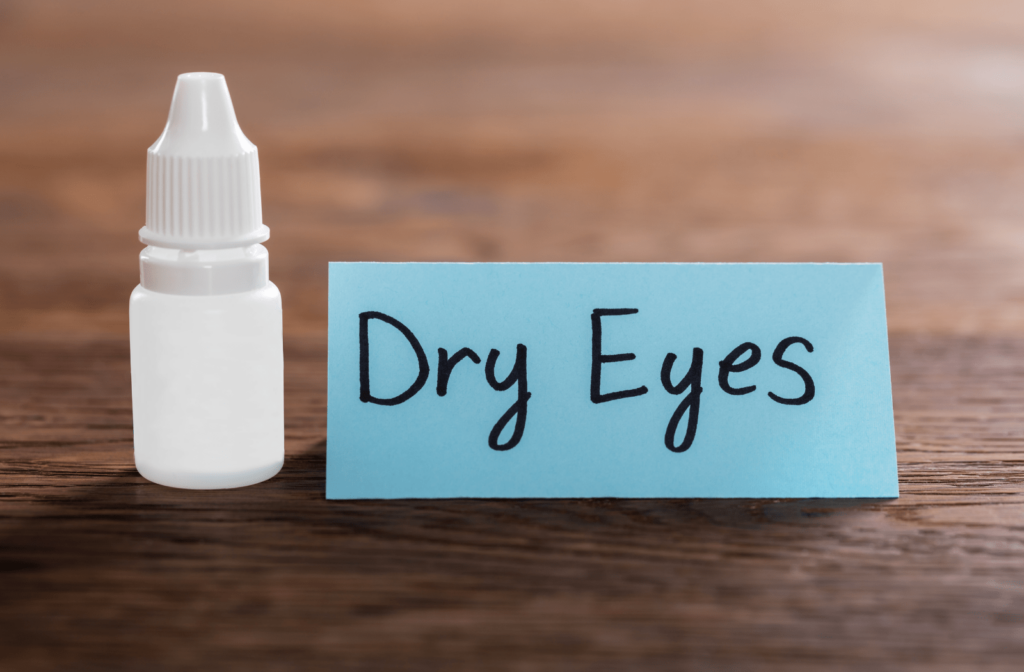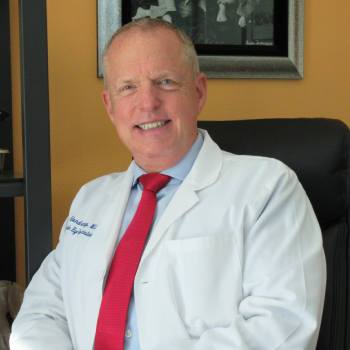Did you know that 5 million Americans over 50 suffer from dry eye disease? Dry eye disease is painful and can decrease your quality of life from the constant urge to rub your already irritated eyes. Thankfully dry eye disease is manageable with the right tools.
Knowing what causes your dry eyes can assist you in reducing symptoms and treating the underlying cause.
Dry Eye Disease
Dry eye disease is a common condition in which your tears are unable to adequately lubricate your eyes. Tear production is insufficient and unstable for a variety of reasons.
This tear instability causes inflammation and damage to the surface of the eye. Your eyes may sting, burn or itch. Other symptoms of dry eye disease include:
- Stringy mucus in or around your eyes
- Light sensitivity
- Eye Redness
- A feeling that something is in your eyes
- Wearing contact lenses may be difficult
- Eye strain or blurred vision
A variety of factors that disrupt the healthy tear film can cause dry eyes. The tear film is composed of three layers: fatty oils, aqueous fluid, and mucus.
Normally, this combination keeps the surface of your eyes lubricated, smooth, and clear. Dry eyes can be caused by issues with any of these layers. Dry eyes can occur in a variety of situations, including
- Being in an air-conditioned room
- Staring at a computer screen for several hours
- Hormone changes
- Autoimmune disease
- Inflamed eyelid glands
- Allergic eye disease
Aqueous Deficiency
An aqueous deficit occurs when the lacrimal glands produce less aqueous output. It’s responsible for only one-tenth of dry eye disease.
Because the water glands (lacrimal glands) that produce your tears are not functioning properly, they’re unable to produce the water component of your tears.
Tears lubricate and protect your ocular surface, and if there aren’t enough, you may feel pain with each blink. The friction against your sensitive eyes isn’t pleasant.
Aqueous deficiency of dry eye (ADDE) is common in people with autoimmune diseases like Sjogren’s syndrome. Sjogren’s patients are unable to produce tears because their glands are not functioning, resulting in dry eyes, dry mouth, and dryness throughout their body.
Evaporative Dry Eye
Evaporative dry eye (EDE), a type of dry eye syndrome, is characterized by swollen, itchy, and blurry eyes. These symptoms are typically caused by the eyes not producing enough tears to cover the ocular surface fully.
The most common symptom of EDE is uncomfortable or inflamed eyes. Other symptoms you may experience include:
- Eyes are stinging or burning
- Eye fatigue, especially after using a computer, phone, or reading for an extended period
- The feeling that something is in your eyes
- Difficulty wearing contacts
- Crusting in the eyes and puffy, reddened eyelids.
Ironically, excessive eye watering may also occur in certain people because irritation can increase tear production.
Dry Eye Assessments
Your eye doctor can perform tests to determine whether or not your eyes are producing enough tears. If the tests reveal that you have dry eyes, your doctor will be able to recommend treatment.
Comprehensive Eye Exam
An eye exam that includes a thorough history of your overall health, as well as your eye health, assists your eye doctor in determining the cause of your dry eyes.
Slit Lamp Test
A slit lamp test is performed by your eye doctor to determine whether your eyes are producing enough tears. First, they’ll place a drop in your eye to make your tears more visible.
Then they’ll shine a thin, bright light into your eye and use a microscope called a slit lamp to examine your eye and eyelids.
Schirmer’s Test
The Schirmer’s test requires no special preparation. If you wear contacts, bring your glasses to your appointment. After the test, you must keep your contact lenses out for at least two hours.
To numb your eye, your eye doctor will administer eye drops. They will then place a small piece of paper on the edge of your eyelid and instruct you to close your eyes for 5 minutes. After 5 minutes, your doctor will determine the amount of moisture (wetness) on the paper.
How to Manage Dry Eye Disease
Most people with occasional or mild dry eye symptoms can get by with over-the-counter eyedrops (artificial tears). If your symptoms are severe and persistent, you have other options. What you do is determined by the cause of your dry eyes.
Some treatments aim to reverse or manage the condition causing your dry eyes. Other treatments can improve the quality of your tears or prevent them from draining too quickly from your eyes.
Optilight
Optilight by Lumenis Intense pulsed light therapy works by combating meibomian gland dysfunction, reducing Demodex mites, fighting inflammation, and focusing on abnormal blood vessels.
Extra Attention to Eyelids
To treat a moderate blockage of your meibomian glands, your eye doctor may recommend applying warm compresses to your eyelids twice a day for a few minutes each. An over-the-counter lid scrub might also be recommended.
Omega 3 Fatty Acids
Omega-3 fatty acids (found in fish, walnuts, and vegetable oils) may decrease the symptoms of dry eye disease.
Ask Your Optometrist for Help
If you would like to book an appointment with Riverside Eye Specialists, we can take a dive into what causes your dry eyes, assess your tear production, and provide you with the knowledge to properly manage the disease.
We provide cutting-edge dry eye management technology to relieve your symptoms and address the underlying causes.




